A short botanical walk in the Barranco de Guaria, from Acojeja
Posted by Sally Whymark
Acojeja is a village in the municipality of Guia de Isora in West Tenerife. You reach the village by turning uphill between the two tunnels on the TF-82 between Guia de Isora and Tejina de Isora. Continue uphill for about 0.75km/0.5ml till there is a turning right, with a wide bit of road around the corner. You can park in this area, which is where the path leaves the village to descend into the Barranco.
The path starts with a sloping stone-paved path leaving the road from next to a signboard. The paved path leads to an old wine-press (lagar) in a roofed enclosure, and then plunges down to the right of the wine-press before levelling out around the base of a basalt cliff, and then gently descending to the streambed.
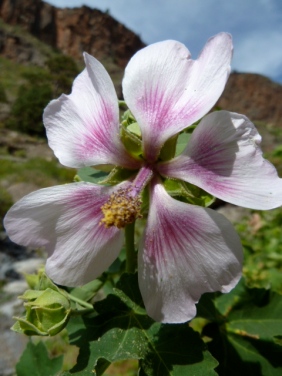
Canary Tree Mallow (Lavatera acerifolia) in the barranco on, and at the base of, the north-facing wall.
On the descent, there are canary lavenders (Lavandula canariensis), Balo (Plocama pendula), Duraznillo (Ceballosia fruticosa), and Madama (Allagopappus dichotomus), among a host of other plants. All the named ones are Canary endemics.
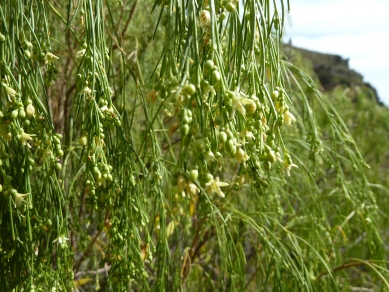
Balo (Plocama pendula), the widespread weeping shrub/tree in the lower zones. It is a Canary endemic
The path comes out in the streambed of the barranco, which is about 5 metres wide at this point, with a deep layer of gravel/well rounded pebbles. I turned up the barranco, walking up the streambed, which is extremely rough following the March storms. So rough it is necessary to watch ones feet continually to pick the place for the next step. At times, it is necessary to scramble up larger rocks to continue the journey upwards. You need to stop to look around every now and then, to see the scenery and the plants.
The base of the barranco is greener, with some different shrubs growing, including the Wild aniseed (Bupleurum salicifolium), a macronesian endemic which is common in this area. It was only just coming into flower, its yellow flowers producing a foamy show for June, July and into August.
On the edge of the gravelly streambed, the invasive introduced Tobacco tree plant (Nicotiana glauca), is common, and in flower. It is common in gravelly disturbed areas, including building sites and empty plots in built up areas. I don’t like seeing it in a protected nature area, but when there are floods, a lot of them are ripped out of the gravel and swept down to the sea.
On the shadier, north-facing cliffs on the right of the barranco as I walked up, there were the massive seedheads of the Cliff celery (Tinguarra cervariaefolia), Sea Kales (Crambe strigosa probably) and Canary tree mallow (Lavatera acerifolia). Again all of these are Canarian endemics. The Cliff celery is an early-flowering umbellifera (Carrot family). The tree mallow (or Maple-leaf mallow) also flowers early, but is still flowering now, so it makes a good show. The Sea Kales belong to the Cabbage family, and have several endemic species in the Canary Islands, which are quite difficult to distinguish. All have large rough leaves in a rosette at the base and long stems with white flowers in sprays which at a quick glance are like the Gypsophila beloved of florists.
I watched the rock climbers on the cliff high up on the left of the barranco. It is supposed to be a hard climb and is very popular at weekends with those who love a challenge. Then I turned just before the Drago tree, to come back down, as I had achieved the purpose of my walk, collecting some seeds from endemic Vicia cirrhosa for a botanist friend who is studying the species.
On the way back out of the barranco I saw a fine specimen of the Roof houseleek (Aeonium urbicum var meridionale), which I had not noticed on the way down. All in all it was a short but pleasurable walk full of some of the special plants that Tenerife has to offer.
The walk was a there-and-back walk of about 2.5km/2mls, but can be longer or shorter, as you wish.
About Sally Whymark
When I retired and moved out to Tenerife a few years ago, one of the things I really wanted to do was go walking in the mountains. The scenery is very dramatic, and varied. The views are amazing. The native birds and butterflies and other fauna are remarkable. But the flowers - they're just stunning. Little did I know how this would fire up my interest in plants. While living in England, I had always had an interest in flowers and plants, indeed I ran a plant nursery with my husband for many years, but had not spent a great deal of time pursuing botany. But when walking in Tenerife, I noticed all the unfamiliar shapes of the local flowers, and longed to find out more about them. There are literally hundreds of species endemic to just Tenerife (or even just one part of it), the Canary Islands, or Macronesia (the Atlantic Islands, including Madeira, Canaries and Azores). They are so exciting, and so many of them are really showy as well. So I have started this blog to share with you my excitement at all the great sights I see when walking in Tenerife. I hope you'll enjoy it - and want to come here and experience it for yourself.Posted on May 14, 2013, in Botanical interest, Walks in Tenerife, West Tenerife and tagged Acojeja, Barranco de Guaria, botany, Canary endemics, Canary Islands, endemic plants, Guia de Isora, Tenerife, Tenerife endemic, walking. Bookmark the permalink. 2 Comments.
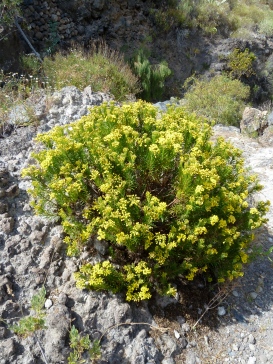
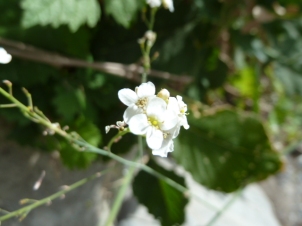
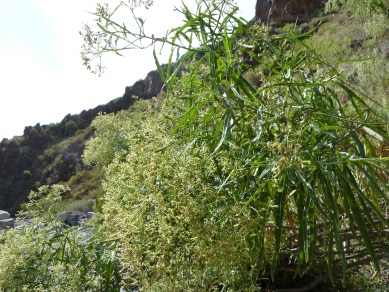
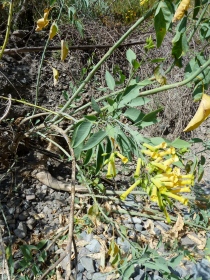
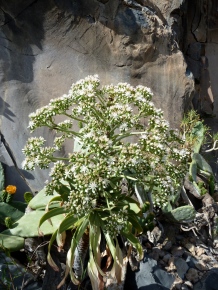
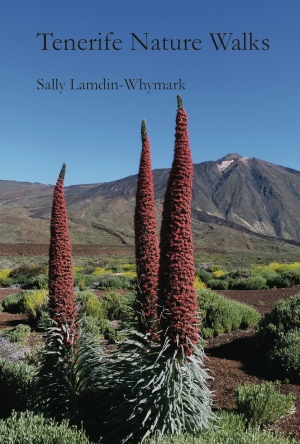
Thank you very much for your book Sally. I bought it after an unexpected week in Tenerife in April. It was so good to discover a wealth of interesting plants on our walks – I was dreading that the island would be all concrete beaches, resorts and swimming pools! Not at all. So now, with the help of your inspirational book,
I am planning a longer visit for next Spring.
I am pleased to hear you have discovered what treasures Tenerife has to offer. Spread the word!